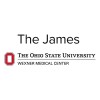
A Study, Combination, Immunologic Study of LTX-315 as Adjunct to GV1001 in Patients Following Curative...
CarcinomaThis study involves testing of the medicine LTX-315 combined with a cancer vaccine (GV1001). This will be tested in patients that have had surgery with curative intent for malignant tumour. GV1001 is a peptide vaccine in development to treat cancer. An adjuvant, is required to start the immune response in the body to have effect of GV-1001. LTX-315, also a peptide, in development for cancer treatment. In this study, the investigators wish to find out whether LTX-315 can make GV1001 more effective at stimulating the immune system.

An Exploratory, Open Label, Multi-Center, Non-Randomized Study of [F-18]VM4-037
Lung CancerSquamous Cell Carcinoma3 morePhase: Exploratory Study Objectives: To collect drug bio-distribution data, begin collection of baseline and tumor/background imaging data, acquire experience to improve study design and the conduct of future studies Design: Exploratory, open label, nonrandomized, multi-center study Duration: Three visits - one screening, one imaging, and one follow-up visit at 24 hours post-dose Procedures: Informed consent, collection of demographic information and medical history, physical examinations, vital signs, 12-lead ECGs, routine blood tests to assess major organ functions, complete blood counts and clinical chemistries for safety, blood sample for CA-IX assay, pre-dose and post-dose blood samples for metabolite analysis, dosing with [F-18]VM4-037, PET imaging scan, dosimetry estimation (normals), urine collections (normals), tumor immunohistochemistry with CA-IX biomarker, follow up to imaging to collect adverse events Subjects: Approximately sixteen (16) adult subjects including four (4) healthy volunteers and twelve (12) cancer subjects who have confirmed or highly suspected diagnosis of head & neck, lung, large solitary hepatic and renal cell cancer, as defined by protocol criteria

Study of Sorafenib and Palliative Radiotherapy in Kidney Cancer That Spreads to the Bone
Renal Cell CarcinomaThe purpose of this study is to investigate the use of a new anti-angiogenic drug called sorafenib, in combination with radiotherapy, for renal cell cancer that has spread to the bone and is causing significant pain. The study will find a safe dose of sorafenib for this combination study treatment, look at side effects, and test if the study treatment is effective in controlling the pain experienced from this type of renal cell cancer. . There will be two parts or phases to this study The purpose of the first phase is to find the highest dose of sorafenib that can be given safely to patients, when combined with radiotherapy. We will also see what kind of effects the study treatment has on you and your cancer. Participants in this phase will receive a dose of sorafenib that has shown to be well-tolerated in humans. If the side effects are tolerable for this dose of sorafenib when combined with radiotherapy, new patients will be asked to join the study and will receive a dose of sorafenib higher than the last study participant. In the second phase, new study participants will receive the dose of sorafenib that was determined to be safe in the first phase. Side effects will continue to be looked at and the effectiveness on controlling pain symptoms from this type of cancer, will also be looked at.

PET Scan as a Screening Tool for Liver Transplant in Patients With Hepatocellular Carcinoma (HCC)...
Hepatocellular CarcinomaThis study aims at testing the utility of PET Scan as a screening tool for liver transplantation in patients with Hepatocellular Carcinoma. Patients being worked up for liver transplant for hepatocellular carcinoma will undergo a PET Scan and will be followed until 2 years after transplantation. At that time survival data will be analysed according to PET Scan results to determine if it can be used to predict outcome.

Combination of Transcatheter Arterial Chemoembolization (TACE) and Sorafenib for Patients With Unresectable...
CarcinomaHepatocellularMost HCC patients are diagnosed at advanced stages in Korea, transcatheter arterial chemoembolization is considered a key modality for palliative treatment in these HCC patients. TACE is currently one of the mainstays of palliative treatments worldwide for patients with inoperable HCC and it has shown survival benefits in patients with unresectable HCC. TACE consists primarily of directly targeted chemotherapy and embolization of arteries feeding the tumors, inevitably resulting in a hypoxic insult to HCC and surrounding liver tissues. Ischemic injury after TACE has been found to induce the upregulation of circulating vascular endothelial growth factor (VEGF), which is essential for tumor growth, invasion and metastasis in patients with HCC. Recent studies have shown a significant correlation between pre-TACE level of circulating VEGF or VEGF upregulation after TACE and HCC characteristics, including tumor size, vascular invasion, and metastasis. TACE consists primarily of directly targeted chemotherapy and embolization of arteries feeding the tumors, inevitably resulting in a hypoxic insult to HCC and surrounding liver tissues. Central tumor hypoxia was found to upregulate proangiogenic growth factors, which are potent mediators of tumor angiogenesis. Therefore, expression of circulating or tissue VEGF was enhanced after TACE in patients or animals with HCC, and there could be some probability of adverse effects of TACE in HCC patients. In addition, the investigators demonstrated that a transient increment of serum VEGF level after TACE was significantly correlated with poor outcomes of tumor progression, especially outcomes relevant to distant metastasis. Therefore, these findings suggest a rationale for applying adjuvant therapy with anti-angiogenesis agent additional treatment of anti-angiogenesis after TACE or during TACE in a selected group of patients HCC. The aim of this study is to evaluate efficacy and safety of sorafenib 400 mg bid with TACE in patients with unresectable and/or inoperable HCC.

Yoga-Based Rehabilitation Program in Reducing Physical and Emotional Side Effects in Patients With...
AlopeciaAnxiety11 moreThis clinical trial studies yoga-based rehabilitation in reducing physical and emotional side effects of living with cancer or its treatment. Yoga-based rehabilitation may reduce side effects and improve the quality of life of patients with breast, lung, or colorectal cancer.

Fractional CO2 Laser Therapy in Minimizing Genitourinary Syndrome of Menopause in Gynecological...
Cervical CarcinomaDyspareunia5 moreThis randomized pilot trial studies how well fractional carbon dioxide (CO2) laser therapy works in minimizing genitourinary syndrome of menopause (GSM) in gynecological cancer survivors. Fractional CO2 laser therapy may reduce symptoms of GSM in survivors of gynecologic cancers.

Evaluation of Oncoxin-Viusid® in Cervical Cancer and Endometrial Adenocarcinoma.
Cervical Carcinoma Stage IICervical Carcinoma Stage III4 moreThe purpose of this study is to evaluate the efficacy of oral solution Oncoxin-Viusid in the reduction of acute toxicity of Radiotherapy (RTP) and Chemotherapy (QTP) in patients with histological diagnosis of cervical cancer and endometrial adenocarcinoma. This is a phase II, prospective, randomized and double blind clinical trial, which will include 66 patients assigned to 2 treatment arms: 33 patients will receive conventional treatment, plus a placebo of the nutritional supplement and another 33 patients will receive along with the conventional treatment the Oncoxin-Viusid nutritional supplement produced by the Catalysis Laboratories of Spain. Patients will receive oral treatment throughout the onco-specific treatment and up to 3 weeks after completion.

Effects of Avmacol® in the Oral Mucosa of Patients Following Curative Treatment for Tobacco-related...
Head and Neck CancerHead and Neck Squamous Cell Carcinoma (HNSCC)7 moreAvmacol is an over-the-counter dietary supplement containing broccoli seed and sprout extracts in tablet form, hypothesized to activate protective cellular pathways including detoxication. In this study, participants who have been curatively treatment for head and neck cancer, will take Avmacol twice a day for 3 months.

Oxybutynin Chloride in Managing Hot Flashes
Breast CarcinomaDuctal Breast Carcinoma In Situ3 moreThis randomized phase III trial studies how well oxybutynin chloride works in managing hot flashes in patients who are not candidates for, or not interested in hormone replacement therapy. Previous studies have shown that oxybutynin is effective in managing hot flashes, however doses used in prior studies have resulted in side effects. This trial is evaluating lower doses of oxybutynin with the goal of determining if they are efficacious with less side effects. ADAM-VTE
